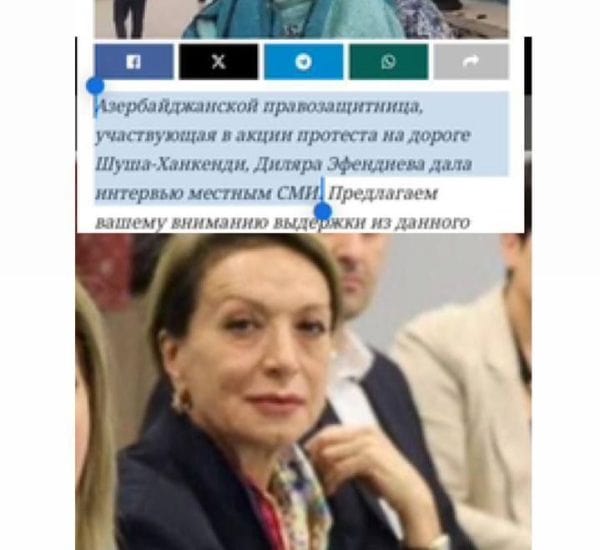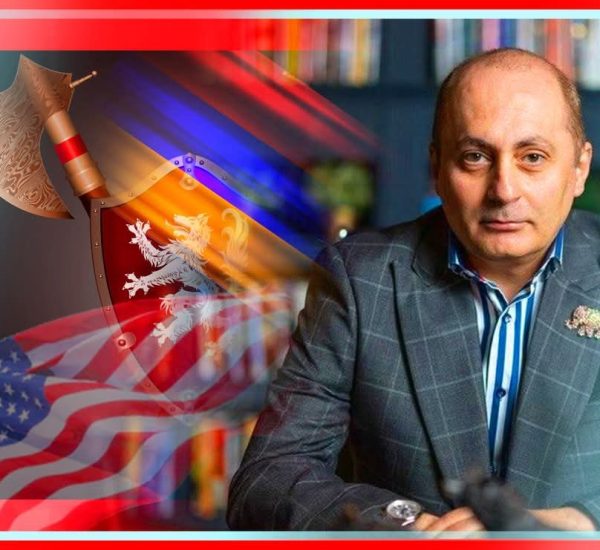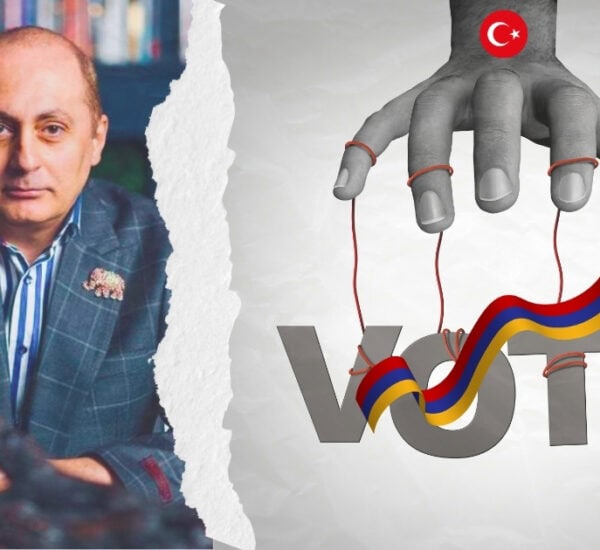The Armenian Church is a national church.
Garegin Nzhdeh
On Holy Week of last Easter, March 30, during the general assembly of the ruling “Civil Contract” party, Pashinyan drew parallels between the resurrection of Jesus Christ and the “resurrection” of the Civil Contract party, saying:
“Blessed are the peacemakers, for they shall be called the children of God.”
Occasional evangelical-style “revelations” from Pashinyan are not new to Armenian society. However, this “mountain sermon,” preceding the dubious hastily arranged Armenian-Azerbaijani border delimitation and the de facto demarcation, was literally repeated during Holy Week prior to Easter in 2022. On that day—two years ago—he delivered from the podium of the National Assembly his notorious thesis about “lowering the bar” regarding the Artsakh issue, which was followed by the blockade of Artsakh, and later in 2023, the ethnic cleansing and full expulsion of Artsakh residents from their homeland.
Between these events—in September 2022—there was yet another Azerbaijani attack on Armenian sovereign territory, during which a portion of Armenian land in Jermuk was seized and remains under Azerbaijani control.
Below is a complete list of Armenian villages currently occupied by Azerbaijan’s authoritarian regime.
Vayots Dzor: Jermuk Ararat Province: Paruyr Sevak Gegharkunik: Kakhakn, Kutakan, Sotk, Kut, Norabak, Nerkin Shorja, Verin Shorja, Akunk Tavush: Berkaber, Sarigyugh, Sevkar, Vazashen, Paravakar, Movses, Artsvaberd, Aygedzor, Chinari Syunik Province: Kajaranc, Salvard, Gorayk, Sarnakunq, Angeghakot, Aghitu, Noravan, Vaghatin, Verishen, Khoznavar, Tegh, Nerkin Hand
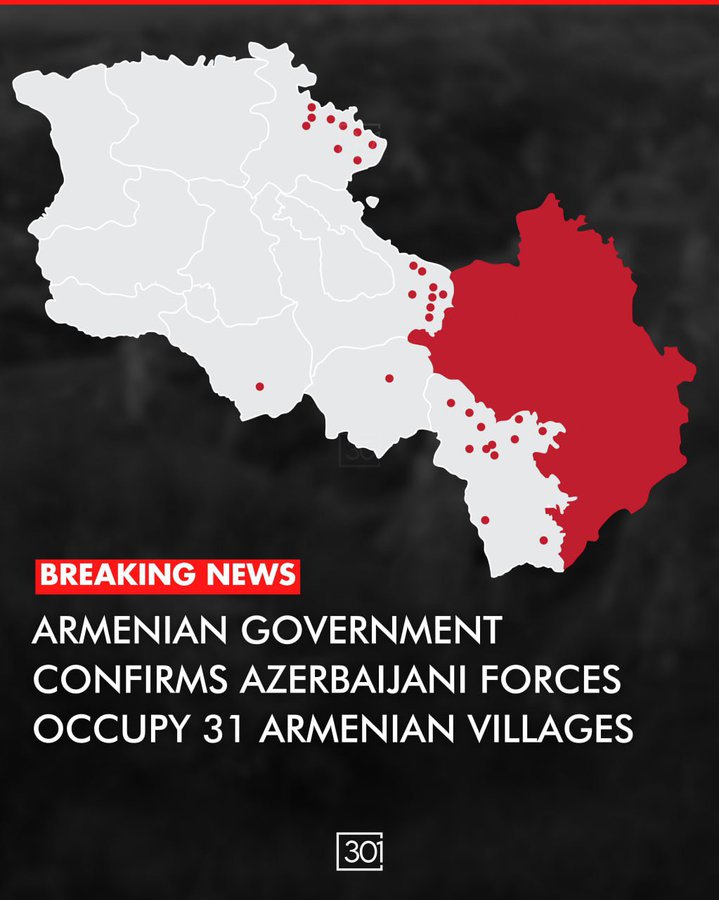
In fact, the person performs a religiously ominous “verbal ritual” every time he prepares to dispossess the people who have naively trusted him.
Why was such a terrifying unilateral concession made without a legal basis—that is, without an internationally recognized peace treaty? Any reasonable voice calling to avoid making a unilateral concession without creating real guarantees is immediately labeled as a “Kremlin agent.” In Armenia today, everyone considers everyone else an agent, but there is a simple way to recognize the truth: the tree is known by its fruit.
What fruit has “Nikolism” borne? This man never explained why, in pursuing his so-called “peace efforts,” he did not keep his promise and failed to ensure a transparent negotiation process for the Armenian people. Instead, he arrogantly dismissed concerns, saying: “Whatever is necessary, we are negotiating it anyway.”
This man, who plays on the emotions of naive people, presented Armenians and Armenia on the international stage as provincial, petty-minded, unaware of their goals and responsibilities, inconsistent and indecisive—but most importantly—as an aggressor state—thereby freeing Aliyev’s hands. The “peacemaker,” supposedly fearing the traitor’s label, but in reality acting according to reasons yet to be revealed, led a preemptively lost or hopeless war-grinder, sacrificing the country’s best young men in the literal sense. “And that one is you, and that one is you…”
AND THE LEADER—THAT ONE IS YOU, NIKOL!
The peacemaker and “Kremlin agent” former journalist kept his own people under total media blockade during the 2020 war, yet allowed free access to the hottest combat zones for the Russian spy-journalist awarded by the Kremlin, Semyon Pegov.
Ask him how Pegov moved freely, and he will shout that the country is full of Kremlin “agents,” then, bowing his head humbly, he will say that, unfortunately, he could not stop them—and he will add…
“Blessed are you when people insult you, persecute you, and utter all kinds of evil against you falsely because of me.”
This man’s “mountain black sermon” reminds me of only one thing: Levon Ter-Petrosyan’s bitter and sinister speech before the infamous March 1, 2008 events.
“Let no victim be demanded except from me…”
Numerous innocent victims were demanded, and Ter-Petrosyan confessed in front of the camera that on the night of March 1, he slept peacefully for the first time. It is no wonder that Pashinyan considered him his idol.
FALSE PROPHET, OR CALCULATING AGENT?
And so, the false prophet roams the villages, prophesying that if people do not relinquish their land and property, war will come. He proposes revising the Armenian Constitution, registering the victims of 1915, implements hasty reforms—sometimes closing maternity wards, theaters, or geodesic institutes—and then optimizes universities, attempting to exile the thinking segment of the nation as far as possible from the center of Yerevan.
Indeed, we are approaching the end of a cosmic great cycle. And if the country’s acting prime minister submits an application to join the ranks of the Church’s “blessed,” then one of the most prominent spiritual leaders of the time must also be hosted… no more, no less, in the “stand-up” genre’s “Serious Casting.”
“This whole war is about truth and lies,” says Archbishop T. Bagrat Galstanyan, head of the Tavush Diocese.
Whether in Sardarapat or elsewhere, throughout the history of the Armenian Apostolic Church, there are numerous examples where representatives of the clergy, during critical moments for the homeland, stood alongside the people fighting for the country’s freedom—not only with words of faith and encouragement but also with weapons.
“Self-defense is the faith of the Armenian people—this is the new creed of the Armenian Church.”
Garegin Nzhdeh
We have a fight to give in order to have a country and to affirm our right to live—to prove our will and courage, but above all, our spiritual purity.
A few days ago, in response to Pashinyan’s “stand-up” and “show” characterization of him in the National Assembly, Archbishop Bagrat expressed in English “stand-up against the evil”, that is, a “stand-up” against evil. And the greatest evil is falsehood.
Falsehood has two ways of breaking through the light-barrier of consciousness. The first is the half-truth with which the people have been fed since independence. Despite the enormous resistance, losses, and blood of our people, the partially corrected historical injustice was not consolidated through diplomatic victories (I am referring to the first president Levon Ter-Petrosyan and his “successive” leaders). Instead, it was left unresolved until the historically opportune moment created by the collapse of the Soviet Empire ended, Azerbaijan grew stronger, Armenia weakened, and from the squandered victory, today remains Nikol’s “Broken Desk of Alma-Ata.”
The second way is total falsehood—the terrible lie that turns everything upside down, making the traitor of the state appear as a “blessed peacemaker.” Surprisingly, the second way, total falsehood, is more effective than the first.
For thirty years, the Armenian people have been able to distinguish truth from falsehood, yet the more terrifying and vast the lie, the more vulnerable the human mind becomes against such deceit.
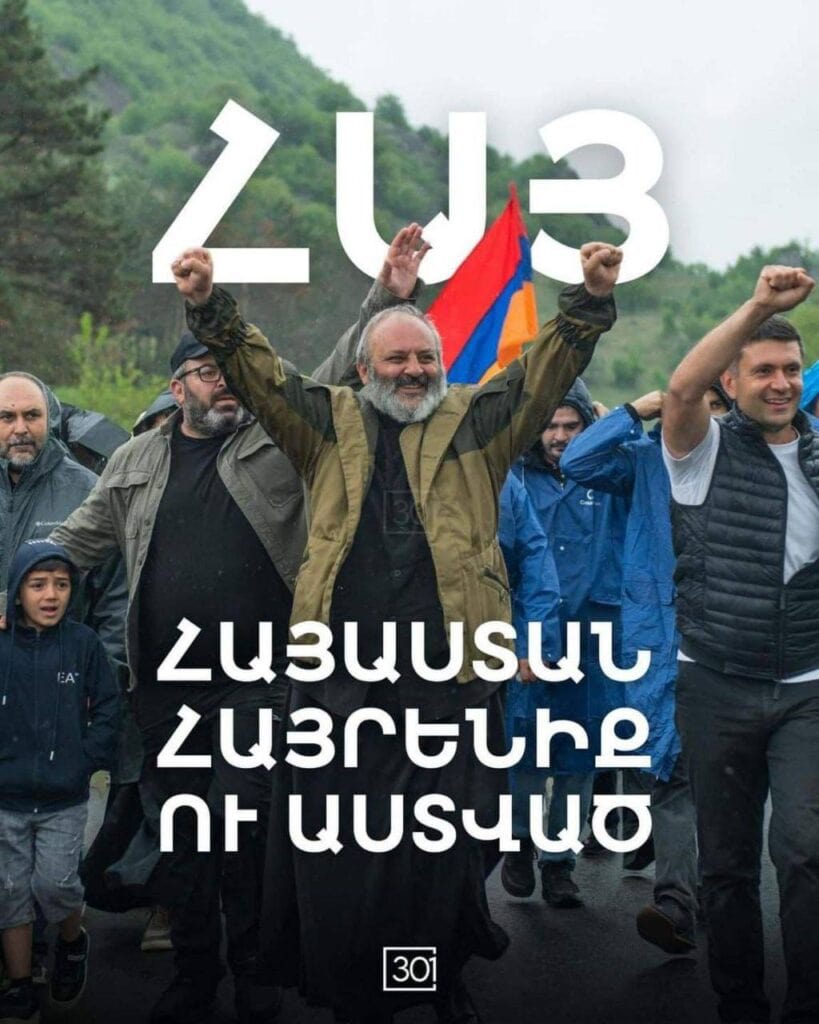
Wake up to reason. The man who supposedly fights against the CSTO and the Kremlin, and calls others “Kremlin spies,” ultimately swears by the borders of Soviet Armenia drawn by the Kremlin—squandering historically reaffirmed justice through blood and casting doubt on the dream, vision, and spirit of historic Armenia. What kind of compromising material does Aliyev have that forces this man to make such unilateral concessions?

THE TRUE PROPHET AND THE POWER OF THE PEOPLE
In the animated film “Elections” (1993) by the prematurely deceased director-animator Robert Sahakyants (based on a song by Ruben Hakverdyan), there are many prophetic images, but this one expresses the current state of Armenia. The line in the song, “Who is God, who is Satan,” corresponds to the glowing haloed figure that has turned Armenia into its guitar, while above, the symbolic “yin-yang” clouds—the black and white devouring each other—float. As they say: find ten differences.
“They have flooded our blood, destroyed our hearth, and in the end, the leaders of your people have sat at the table with the enemy.”
Mushegh Galshoyan, “Dzori Miron”
Only a perezak—the corrupt or utterly degraded provincial merchant who has no principles beyond his petty gain—sits at the table with the enemy, ready to sacrifice the invaluable: the spirit and dream of the nation.
Do you remember? The man promised a solution acceptable to all three peoples. Only a perezak could speak that way. He forgot to mention, in his very name, the Russian Kremlin and the core of Turkey, even though he was selling their merchandise…
“…at the helm we will place our own sickly, corrupted, useless offspring.”
—Ruben Sevak, “Corruption”
O Armenian, by constantly taking the wrong path, you have partly been degraded, corrupted, turned into a perezak, and lost your vitality! And among you, a rogue perezak placed the name “DUKH” on it and successfully sold it…
Postscript
The man who considers himself a great expert in Armenian language and (oh, alas!) spirit, cannot even properly pronounce “REPUBLIC OF ARMENIA”. Hence, what we have is not a country, a state, or a homeland, but “Nikol’s Public Opinion.”
–

